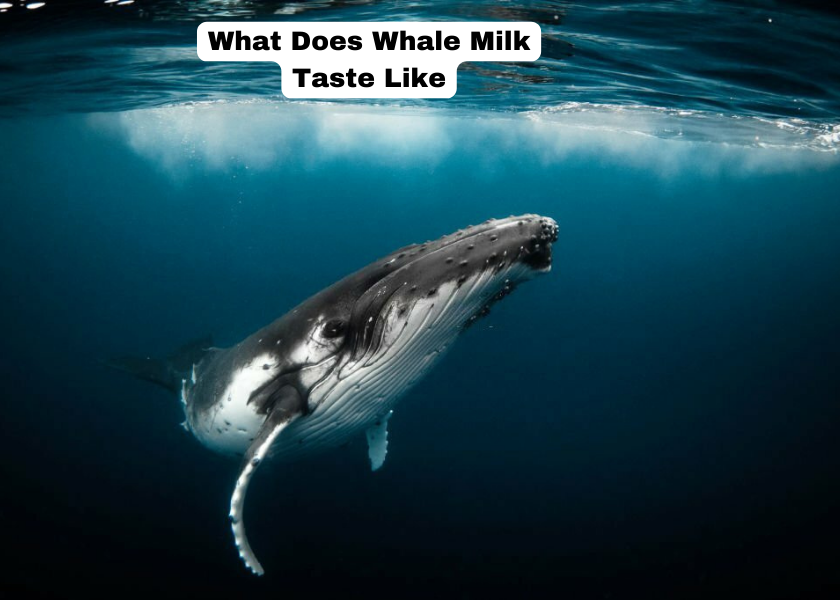Whale milk, a fascinating aspect of marine life, has piqued the curiosity of many. Ever wondered, “What Does Whale Milk Taste Like?” In this informative article, we’re going to embark on a journey to discover the specific taste of whale milk. From exploring the science behind it to sharing first-hand reports, we will leave no stone unturned. So, permit’s dive in!
What Does Whale Milk Taste Like?
Whale milk offers a unique taste, with hints of saltiness, fishiness, and creaminess due to its high protein, fat, and omega-3 content. It’s often compared to fish in a milky blend. While its consistency resembles heavy cream or soft butter, some variations can range from ivory to greenish. Interestingly, enthusiasts suggest using it as a base for a rich and flavorful ice cream. Just keep in mind that a small serving packs around 900 calories, so it’s a treat best enjoyed in moderation.
The Unique Flavor Profile
Whale milk has a taste profile not like some other milk you’ve got tasted. It’s frequently described as a combination of fishy, salty, and slightly sweet. The strong fishy undertones come from the whale’s seafood food plan, which closely influences the milk’s taste. The saltiness is a result of the marine surroundings in which these dazzling creatures stay. Lastly, the contact of sweetness may be attributed to the milk’s excessive fat content material, which is critical for the increase and nourishment of whale calves.
Texture and Consistency
In addition to its distinctive taste, whale milk also has a unique texture and consistency. It is notably thick and creamy, akin to condensed milk. This rich texture is essential for providing the necessary nutrients to young whale calves, aiding in their rapid growth.
First-Hand Accounts
To truly understand “What Does Whale Milk Taste Like?” it’s best to turn to those who have experienced it firsthand. Marine biologists and researchers who have studied whales have occasionally sampled the milk as part of their research. Their accounts often align with the fishy, salty, and slightly sweet flavor profile, reaffirming the uniqueness of whale milk. Click to read about Inherited House Fresno.
Where does whale milk come from?
Whale milk comes from female whales, specifically from their mammary glands, just like how milk is produced in other mammals, including humans. It’s the primary source of nourishment for baby whales, providing them with essential nutrients for their growth and development.
How to Cook and Serve Whale Milk
Cooking Whale Milk
Whale milk is a unique and rare ingredient that is not commonly found in culinary practices. It is essential to handle it with care and respect for the environment.
- Source Whale Milk Ethically: Ensure that you source whale milk ethically and legally, adhering to all relevant regulations. In many places, hunting whales for their milk is illegal due to conservation concerns. It’s crucial to obtain it from reliable and sustainable sources, if available.
- Handle with Clean Hands: Before starting, make sure your hands are clean and sanitized to maintain the milk’s purity.
- Pasteurize the Whale Milk: Whale milk should be pasteurized to eliminate potential contaminants. Heat it to a temperature of 161°F (72°C) for at least 15 seconds. Use a thermometer to monitor the temperature accurately.
- Avoid Overheating: Be cautious not to overheat the milk, as it can alter its taste and texture. Maintain a consistent temperature to avoid scorching or curdling.
- Cooking Techniques: Whale milk can be used in various culinary applications, such as sauces, soups, or desserts. Be creative and consider how its unique flavor can enhance your dishes.
Serving Whale Milk
Whale milk can be a delightful addition to various culinary creations. Here’s how to serve it:
- Keep It Simple: Since whale milk has a distinct taste, it’s often best appreciated in simple preparations. Consider using it as a drizzle over fresh fruit, a topping for pancakes, or as an accompaniment to seafood dishes.
- Pairing: Whale milk pairs well with dishes that have subtle flavors to complement its unique taste. Seafood, especially fish and shrimp, can be an excellent match. It can also be used to add a touch of creaminess to fruit salads.
- Chilling: Whale milk can be served cold. Refrigerate it for a refreshing and unique beverage. Add a bit of honey or sweetener if desired.
- Experiment: Don’t be afraid to experiment with whale milk in your cooking. Try using it in creamy sauces, ice creams, or even baked goods. Its rich, creamy texture can bring a new dimension to your recipes.
- Use Sparingly: Given the rarity of whale milk, use it sparingly to make the most of its unique flavor and texture.
Remember, it’s important to approach whale milk with responsibility, both in terms of ethical sourcing and in the kitchen. Use it thoughtfully to appreciate its distinct qualities.
Does whale milk have lactose?
Whale milk does not contain lactose. It’s naturally lactose-free, making it different from many other types of mammalian milk.
People also ask
Why Do Whales Produce Milk with Such a Unique Flavor?
Is Whale Milk Used for Anything Besides Feeding Calves?
Can Humans Milk Whales?
How Is Whale Milk Studied?
Final Thought
In the world of marine biology, “What Does Whale Milk Taste Like?” remains a captivating question. Whale milk’s flavor is a testament to the incredible adaptations of these majestic creatures to their marine environment. With its fishy, salty, and slightly sweet taste, whale milk is a unique and vital component in the nurturing of whale calves. While not readily available for human consumption, it plays a crucial role in the circle of life in the ocean.
If you’ve ever been curious about the taste of whale milk, now you know that it’s a one-of-a-kind experience. The next time you ponder this intriguing question, you can share your newfound knowledge about the remarkable flavor of whale milk.




